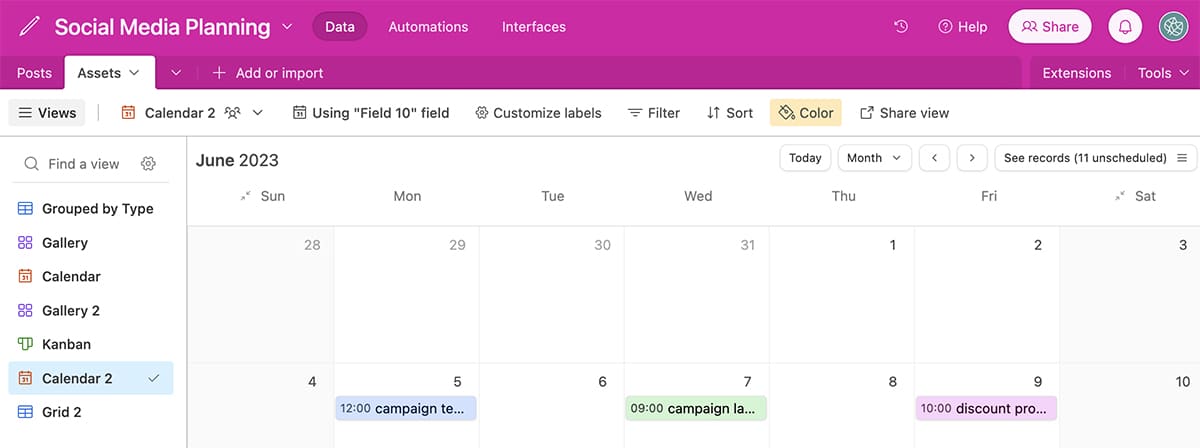Whether you’re a solopreneur who’s growing your own business or you’re a marketer who works for a B2B company, an ROI-driven content strategy is crucial for reaching business goals. So how can you build a content plan around ROI, and how do you know if your ROI content marketing is working?
In this article, we’ll cover a six-step content strategy framework that you can implement starting today. From setting goals to measuring return on investment to optimizing funnels, we’ll walk through how to create an ROI-driven approach that generates value for your business.
Would you rather listen to the conversation? Tune into the webinar hosted by Amanda Webb of Spiderworking. This article recaps Amanda’s insights from How to Build an ROI-Driven Content Strategy for B2B.
5 Types of B2B Marketers and Why They Matter
Before we launch into the content framework, let’s start by looking at a few common types of B2B marketers. Make a note of the one you most identify with to get a better idea of your marketing strengths and weaknesses. Then use the tips below to leverage what you do best and improve in important areas.
- Scattershot marketers tend to be highly creative and excellent at making and publishing content. But they want to be everywhere all at once, and they don’t really have a plan for leveraging every channel. Since measurement isn’t a priority, they don’t always know what’s working.
- Checkbox marketers tend to be highly organized. There’s a plan for everything, and they never miss a chance to check off an item on their to-do list. But they aren’t that creative, and they don’t take time to explore the results from all the content they publish.
- Advertisers tend to be excellent at running successful paid social campaigns. They’re wild about measuring and optimizing ads, but most of their work is revenue-driven. As a result, they don’t always see the value of running organic social campaigns.
- ROI marketers tend to be driven by data. They check social media reports constantly and always know if they’re hitting their key performance indicators (KPIs). Because they follow the data so closely, they’re often less open to experimenting, especially with upper-funnel content.
- Superstar marketers are a mix of all the types above. Ideally, once you master the framework below, you’ll be a superstar marketer who’s driven by ROI but who’s also open to experimenting at opportune times.
How to Create an ROI-Driven Content Strategy for B2Bs
Implementing a content strategy doesn’t have to be as difficult as you might think. Here’s a simple framework that you can use to get started.
ROI content marketing step 1: Take stock of your current situation
Unless you’re launching a brand new business today, you probably have a lot of helpful data to guide your process. The ideal first step is reviewing what you’ve done and how it’s working.
Customer acquisition channels
Begin by taking stock of the channels where you tend to attract customers. In many cases, these channels will be digital, such as:
- Your website, which might have contact forms or sales portals
- Social media, where you might attract customers via DMs
- Email marketing, where you might nurture and convert leads
- Phone calls, which might come from your Google Business Profile listing or from social media
Next, review notes from recent customer interactions—or start taking them if you don’t already. Which channels have customers mentioned?
- Do they love your company’s LinkedIn content or email newsletter?
- Did they read your recent newsletter?
- Have they listened to all your podcast episodes?
If most of your customers come from digital channels, Amanda recommends using Google Search Console to see which parts of your website are getting the most traffic. This tool is also useful for finding trending search terms.

Google Search Console
Open Google Search Console and open the Performance dashboard to explore your traffic metrics. On the Pages tab, you can see which pages are appearing most often in search and which are getting the most clicks.
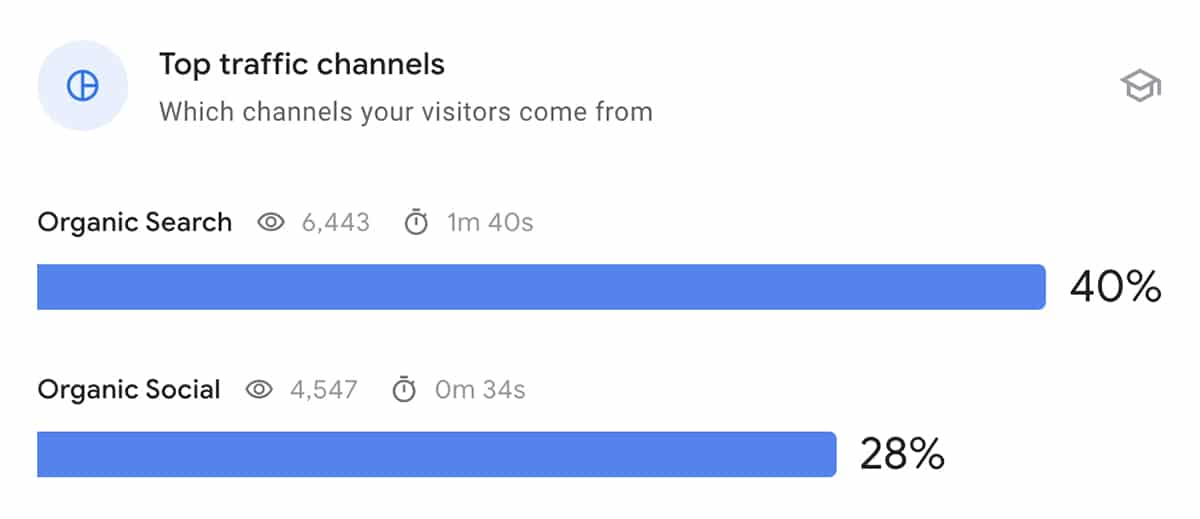
Top traffic channels
Go to the Insights panel to dive into trends. Here, you can see your most popular content and your busiest traffic channels.
Touch points and conversions
Google Search Console is great for getting an overview of your traffic and finding trends. To explore marketing touch points and sales conversions, Amanda recommends using a tool like Google Analytics.
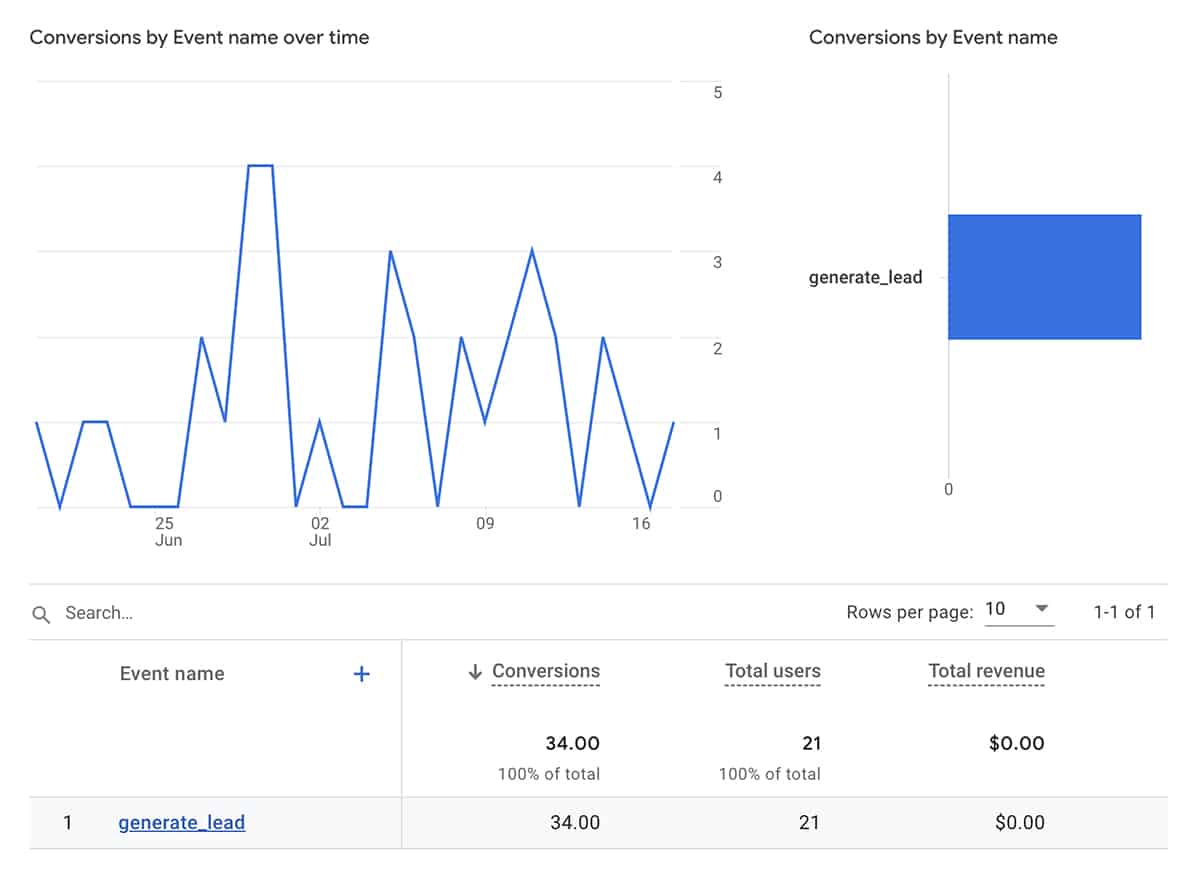
Google Analytics’ conversions report
Identify important customer touch points on your website (i.e., your contact form or service page) and set them up as conversions in Google Analytics. Then use the platform’s conversion report to monitor results.
Click any conversion event to see which channels or campaigns are generating the most results. For example, you might find that organic social, organic search, or paid search is driving tons of traffic.
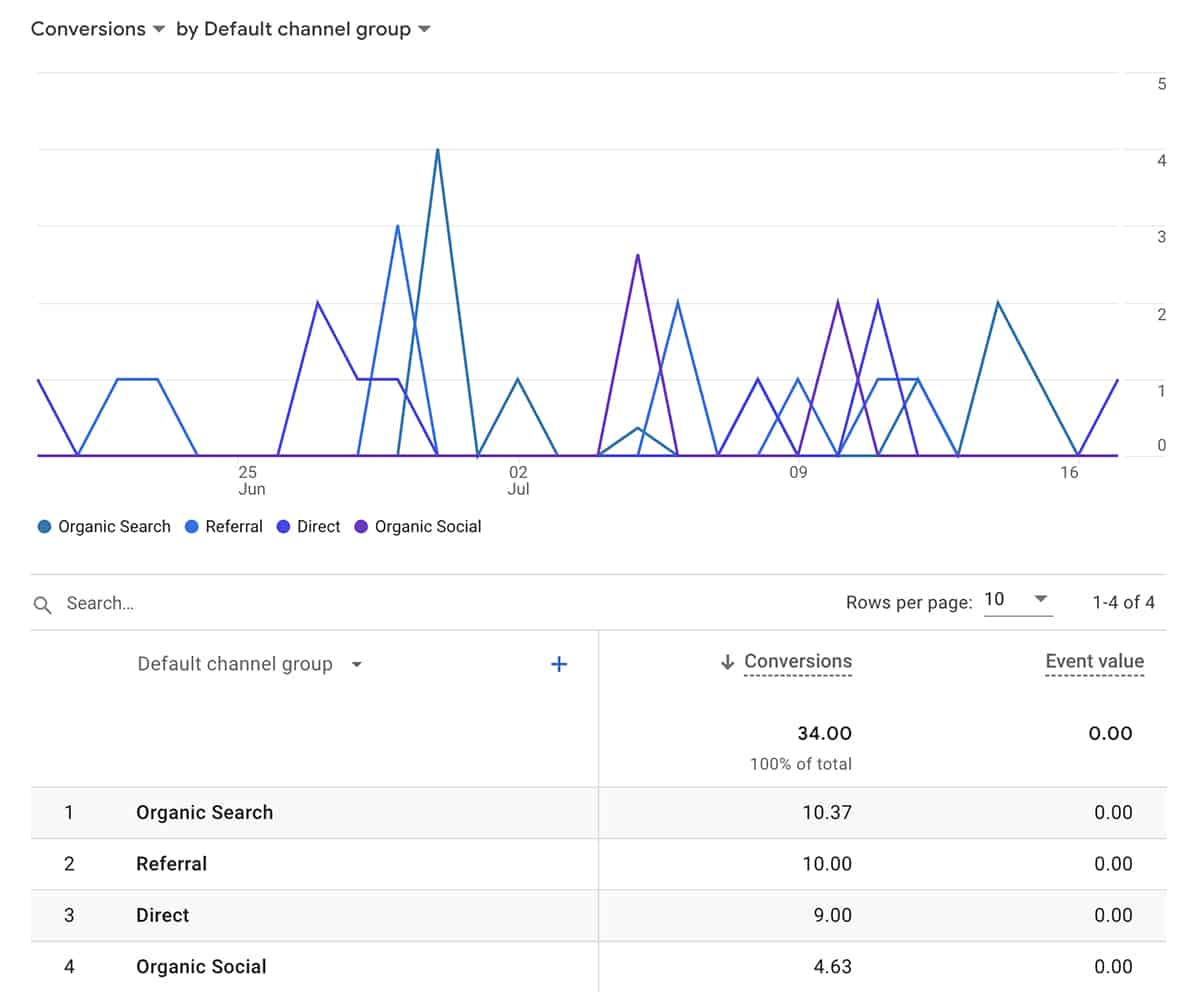
Google Analytics: conversions by channel
For more insights on which channels and campaigns are driving traffic to your site, make UTM codes part of your process. Then you can see whether leads are finding your content from social media, email, or other channels.

Agorapulse’s ROI dashboard shows the funnel by profile
With Agorapulse, adding UTMs to social media content is easy. In the post composer, add a link to a post and click the Untracked button to add campaign tracking.
In addition to tracking the social network, Agorapulse also monitors every campaign and social media post that drives traffic.

Agorapulse’s ROI dashboard’s funnel by content type
You can track all your social channels, profiles, and campaigns from the ROI dashboard. Here, you can spot your most lucrative channels, landing pages, and content.
ROI content marketing step 2: Add up your investments
A key part of measuring ROI is knowing how much you’re investing in each channel. Depending on the types of channels and campaigns you run, your list might include any or all of the costs below:
- Advertising spend
- Social media management software
- Email marketing software
- Design software
- Stock images or videos
- Website hosting and maintenance
- Contractors
Keep in mind that your own time is also a major part of your total marketing investment. If you typically jump from project to project throughout the day or week, use a time tracking tool that lets you assign time to tasks and projects.
Amanda Webb, in the webinar, recommends using Toggl Track, which is ideal for solopreneurs. The dashboard lets you break down your time by both client and task, which is great for keeping track of exactly how you’re spending your time.
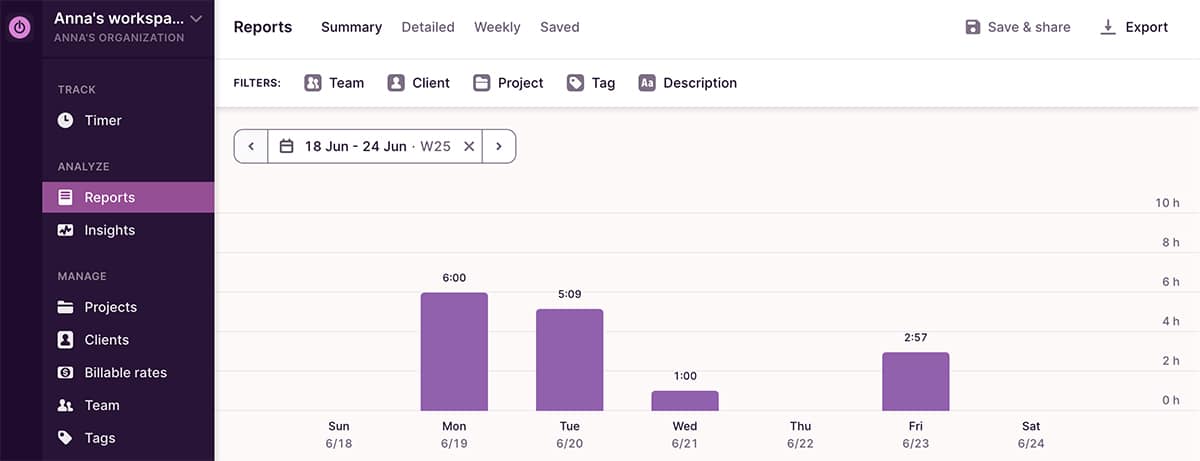
Toggl Track helps track time investment
Amanda Webb suggests setting up your own business as a client in Toggl Track, so you can monitor how much you’re spending on marketing your own business. With a paid plan, you can even enter billable rates so the dashboard will automatically calculate how much your time costs.
If you work with a large company or with a team, you can use a platform like Toggl Track to gather data on how much time everyone is spending on a given project or campaign.
ROI content marketing step 3: Calculate your social media return on investment
Do your costs seem higher than you thought? Balance it out by calculating the return from your marketing efforts.
The tools you use for measuring return will depend on the types of campaigns you run and the channels you use to generate conversions.
For example, if you run ads on social channels like Facebook or LinkedIn, you might use each channel’s built-in advertising platform to measure outcomes.
If you rely on organic social, email marketing, or SEO, then you’ll probably rely on Google Analytics (see above) or a similar tool to track results on your website.
No matter which channels you use, Amanda recommends making note of revenue-adjacent metrics like:
- Leads
- Sales
- Conversion rate
To measure social media ROI, you’ll also want to track the revenue from every channel you use. In some cases, you can track value automatically in Google Analytics.
But if you’re a B2B service-based business or if transactions don’t happen on your website, you’ll need a separate method (i.e., a spreadsheet) for tracking return.
Download our FREE social media ROI guide today!
ROI content marketing step 4: Establish business goals
By now, you should have an idea of your business’s current situation. From here, you can set goals to get your business where you want it to be.
Reverse engineer your revenue
Amanda suggests starting with setting a revenue goal. But keep in mind that this is only the first step. How much do you want to earn in the next quarter? For simplicity’s sake, let’s set a goal of $100,000. Next, translate that revenue number into sales. How much do your products or services cost? Let’s say each B2B service package costs $1,000. You’d need to sell 100 B2B service packages to make $100,000 during the quarter. Take that number one step further. What’s your average conversion rate? (Go back to step two if necessary.)
Let’s say your conversion rate is 10%. At a 10% conversion rate, you’d need 1,000 leads to sell 100 B2B service packages.
Find areas for opportunity
Once you have a sense of what you need to accomplish, Amanda recommends thinking about how you can reach those goals. In many cases, reviewing what you’ve already done can give you some good ideas for moving forward.
Say you need to improve your lead generation strategy. How have you successfully found leads in the past? Can you do more of what’s already worked?
For example, say you’ve seen the most success from reaching out to potential leads on LinkedIn. Can you reliably find more leads who fit your ideal customer profile (ICP)? Do you have time and resources to reach out?
Suspect that you could attract far more leads via organic search? You might optimize your content for search, update outdated content, or create more content around an area of topical authority.
Consider new avenues to test as well. For example, you might consider running ads on LinkedIn to see if you can generate leads automatically.
Perhaps finding more leads isn’t a problem, but attracting qualified leads is a pain point. Amanda suggests thinking about ways you can qualify leads more reliably.
For example, you might add more questions to the contact form on your website. Or you might use native lead forms in LinkedIn ads to qualify prospects.
Asking questions about budgets and timelines can be incredibly helpful for filtering out prospects who are a bad fit. Just make sure to strike a balance between asking enough qualification questions with asking so many questions that good leads click away before submitting the form.
Another way to attract more of your ideal customers is to update your website. Amanda recommends reviewing the copy and messaging on your site to ensure it speaks to your ICP.
ROI content marketing step 5: Map your sales process
Once you’ve established the goals you need to achieve and some areas for opportunity, you need to decide where to focus. What kind of content should you make, and which parts of the funnel should you target? Amanda explains that mapping out your marketing and sales process is crucial for understanding where you can add the most value and see the biggest benefit.
Here’s an example of how your process might look. Depending on what your business sells and how you sell it, your marketing sales process could have far more or far fewer touch points.
- Social media post
- Click to landing page
- Click to sales, service, or product page
- Contact form submission
- Email follow-up
- Sales call
- Proposal
- Proposal follow-up call
ROI content marketing step 6: Align marketing with your sales process
Now it’s time to put together everything you’ve mapped out, taken note of, and calculated. In other words, feed your sales process by creating an ROI-driven content marketing strategy.
Know your funnel
Even if your sales process is relatively short, you can’t jump right into selling. You need an audience first.
When considering audience growth, Amanda encourages marketers to think beyond vanity metrics. A larger audience is about more than just numbers. It also means a bigger group of potential customers.
In most cases, your content funnel will look something like this:
- Build your audience
- Engage your audience
- Sell to your audience
Choose your content channels
If you’re a marketer who wants to check all the boxes or be everywhere at once, consider narrowing down the list of channels your business uses for marketing.
Especially if you have a small team, you need to zero in on the channels that are likely to deliver the highest ROI. Otherwise, you’re likely to waste time and resources.
Amanda suggests focusing on one content channel (i.e., a blog, a YouTube channel, or a podcast) and choosing one or two social networks.
Get clear on why you’re choosing certain channels. Use this framework to clarify your approach:
- What is it for (i.e., awareness or customer service)?
- Who is it for (i.e., what audience do you hope to reach)?
- How will using this channel benefit your audience?
- What type of content will you post and how frequently?
- How will you engage with the audience (i.e., reactive or proactive)?
Fill your content buckets
Not all content will drive the same results. When creating content, think about it in terms of categories or buckets. Amanda recommends using these four:
- Informational content to build an audience (i.e., tips and tutorials)
- Engagement content to build a connection (i.e., questions, polls, and quizzes)
- Lead generation content to get a commitment (i.e., lead magnets and free trials)
- Sales content to convert (i.e., case studies and testimonials)
Ideally, you’ll want to create some content for each bucket throughout a given week or month. Depending on which step in your sales process or funnel needs the most work, you’ll want to create more for some buckets than others.
Brainstorm content ideas
Next, map out ideas that fit your funnel, channels, and buckets. If you have new products or seasonal promotions planned, you’ll want to start with those.
To get more ideas for relevant content for your audience, Amanda suggests using tools like Answer the Public, Reddit, and Quora. I also like using Google Trends to find timely content ideas.
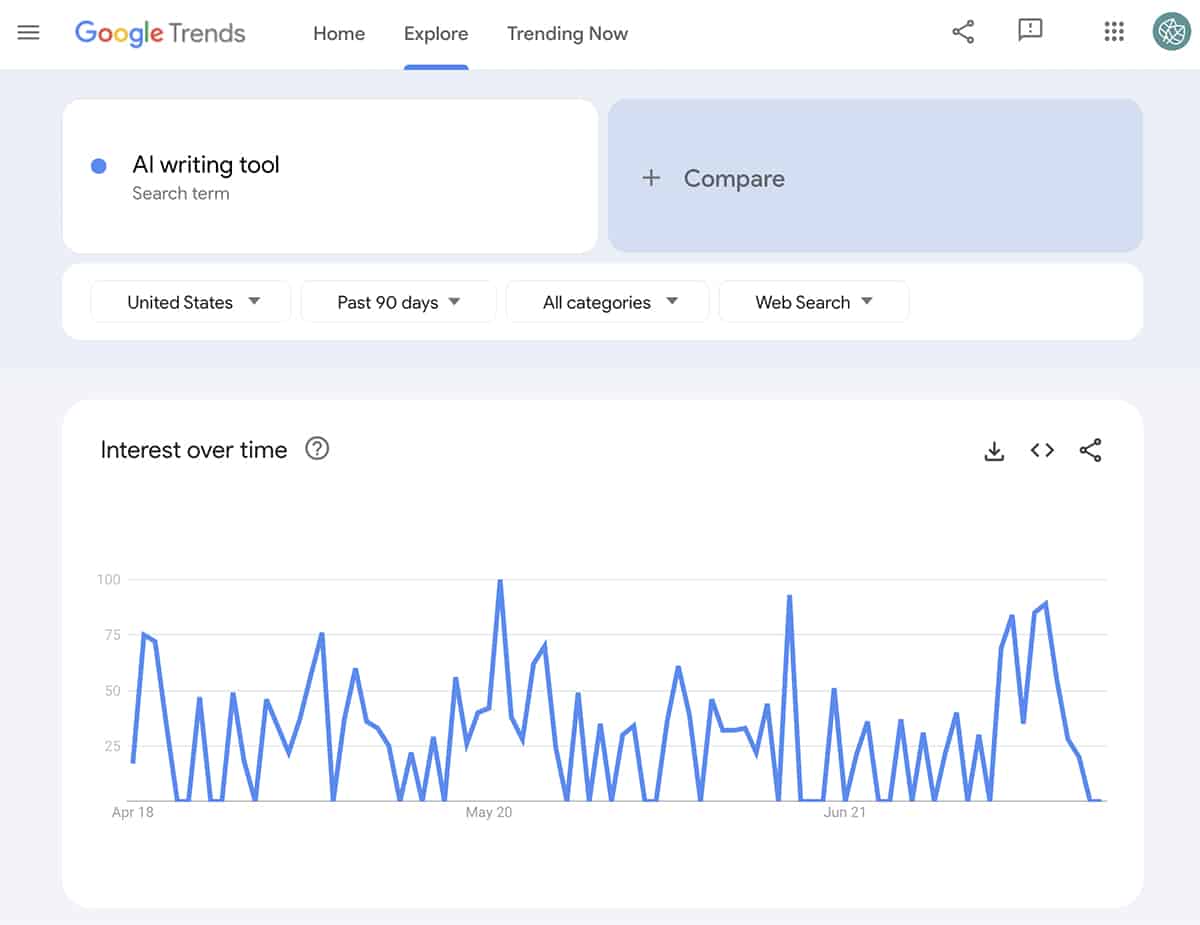
Google Trends for brainstorming content ideas
Build a content calendar
As you come up with ideas, add them to your content calendar. For social media marketing, I typically use Airtable to plot ideas before scheduling them in Agorapulse.
Since Airtable allows labels, color coding, and creative asset uploads, it’s great for working out ideas before they’re ready to go live. With Airtable, you can also share calendars with clients and colleagues, so it’s helpful for collaboration.
Measure your content buckets
Once you start implementing your ROI-driven content strategy, take time to measure the results. Remember that not every type of content will drive the same results.
Amanda suggests using these metrics for each content bucket:
- Informational: Audience growth, reach, and shares
- Engagement: In-app engagement, engagement rate, and website visits
- Lead generation: List growth, DMs, lead magnet downloads, and leads
- Sales: Qualified leads, conversions, and conversion rate
Agorapulse can help with measuring social media results, from engagement to ROI. If you need to measure multiple channels, a reporting platform like Google’s Looker Studio is another good choice.
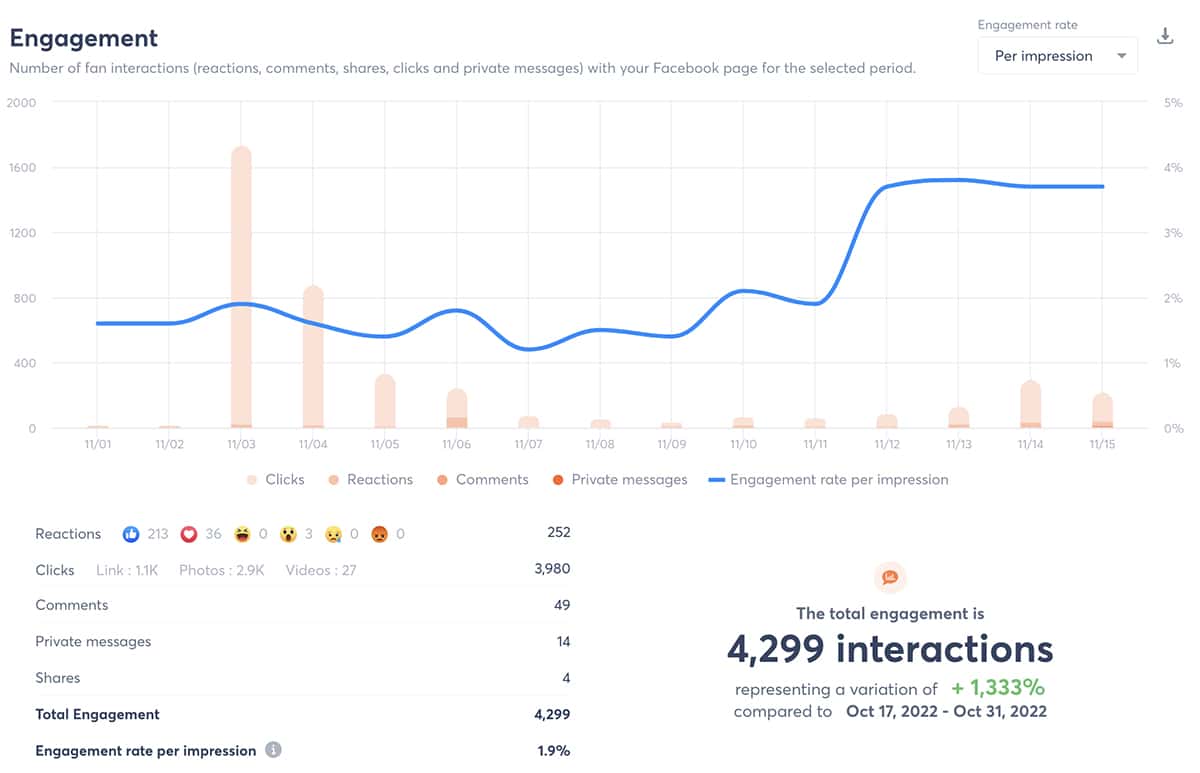
Agorapulse’s reporting shows organic social engagement.
Ideally, your content strategy will continue to improve ROI. But remember that if you’re too focused on metrics and last-click data, you could miss out on tactics that are working. Remember to consider upper-funnel metrics and save space for experimenting.
Download our FREE social media ROI guide today!
Wrapping Up What We Learned About Building an ROI-Driven Content Strategy
When you know what you’re investing into your content strategy and what you’re getting out of it, you can create content that aligns with your sales process and maximizes ROI. With a solid framework like the one above, you can continue to refine your process and create a successful ROI-driven strategy for your B2B business.
Sign up for a free trial with Agorapulse and start proving your social media ROI.



